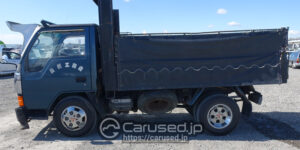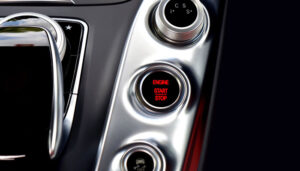With the inflation rates continuing to rise, it is essential to be practical when it comes to buying vehicles. It is not surprising to find an Australian choosing a car auction in Japan over local dealerships. After all, Japan has been known around the world for providing top-quality car models and makes. What’s more, it is not uncommon to find a large selection of used cars that are A-grade in terms of performance and condition. Since pre-owned Japanese vehicles are more cost-efficient, they are beginning to take the interest of many Australians.
However, apart from the upfront cost of the vehicle, there are additional fees and taxes associated with this option. If you are planning to import a Japan used car to Australia, it is essential for you to learn how to calculate the duties and taxes you need to pay. This way, you won’t be unpleasantly surprised by the total cost of the vehicle you wish to import.
In Australia, importing vehicles can be complicated due to the many rules and regulations. However, when you turn to Carused.jp, we will help make the process a lot easier for you. Just contact our friendly sales representatives who will guide you through the steps and even help you compute the total fees you need to pay. On the other hand, it will still be helpful if you understand how the taxes and duties are calculated.
The Department of Infrastructure and Transport in Australia is responsible for monitoring and importing vehicles. They work in conjunction with the Border Protection Service and the Australian Customs. So, if you want further assistance on this subject, it would be best to seek assistance from these government bodies.
Defining Terms
The car export/import industry is full of jargons you need to understand. For this article, there are two primary terms you need to remember in order to make the learning process easier. These are the important aspects of your calculations:
FOB: This stands for ‘Free on Board’ which is the upfront price of the vehicle. It does not include additional costs like shipping, insurance, and inspection fees, among others.
CIF: This stands for ‘Cost, Insurance, and Freight’. It is the sum of the FOB and other shipping-related costs, including inspection and insurance.
Step-by-Step Guide in Calculating Car Import Taxes, Duty, and Fees in Australia
Disclaimer: The values illustrated in this article do not necessarily represent the actual price of the vehicle you wish to purchase. For more accurate rates, please check out our online catalog or use our online auction tool.
Step One: Choose the Car Model and Make
Of course, the first step is to select the car model and make you wish to purchase. It is worth noting that any dealership or car auction in Japan typically display the FOB. So, to get the total value of the car, you must add the FOB to other additional costs, including inspection, insurance, and shipping fees as well as taxes and duties.
Step Two: Gather the Date on the Vehicle
In Australia, various factors contribute to the total amount of the imported vehicle. For instance, the manufacture year affects the duty rate levied on the car. In most cases, the taxes are computed on the depreciated value of the vehicle. However, the matter changes when you are going to import a classic or luxury vehicle. While vehicles that are 30 years and older are not subject to customs duty, their taxes will be computed based on the actual value of the car.
So, you need to get the following details:
- Vehicle model and make
- Year of manufacture
- Model code
- FOB
Let’s say you’re searching for a Toyota HiAce van and you chose a 2008 Toyota HiAce KDH206V from our listing. Get the specifications and write down the details.
- Vehicle model and make: Toyota HiAce
- Year of manufacture: 2008/8
- Model code: ADF-KDH206V
- FOB: $4,000
Step 3: Choose your Port of Delivery
The next thing you must do is choose a port of delivery. In Australia, the used vehicles are typically shipped to the ports of Brisbane, Adelaide, Melbourne, Sydney, Fremantle, and Darwin. Once you’ve chosen the port of delivery, you will be able to compute the CIF. At Carused.jp, you will find a plug-in that will let you calculate the CIF conveniently.
Let’s say you chose Adelaide as your port of delivery for your Toyota HiAce van. The CIF will likely be around 4,920 USD. You will see this amount on the invoice prepared by the car dealer or auction house.
Step 4: Calculate the Taxes, Duties, and Fees
Vehicles are subject to fees imposed by the Department of Customs. These charges are made up of two components – Duty and Goods and Services Tax (GST). Keep in mind that the customs duty is computed based on the FOB. Meanwhile, the GST is calculated based on the sum of the FOB and the duty. Here are the figures:
Vehicles over 30 years old
- Duty: 0%
- GST: 10%
New and used vehicles 0 to 30 years old
- Duty: 10%
- GST: 10%
Four-wheel drive/off-road vehicles & commercial vehicles
- Duty: 5%
- GST: 10%
Now, let us go back to the example. Your Toyota HiAce will fall under ‘new and used vehicles 0 to 30 years old’. So, it is subject to a 10% duty and a 10% GST.
- Let’s compute the customs duty rate:
- Now, let’s calculate the customs value of the vehicle:
- Here is the computation of the GST:
- The total amount payable will be:
10/100 x 4,000 USD = 400 USD
4,000 USD (FOB) + 400 USD = 4,400 USD
10/100 x 4,400 USD = 440 USD
400 USD (Duty) + 440 USD (GST) = 840 USD
Step 5: Calculate the Overall Expenditure
Now, we’ve determined that the total duty and tax charges amounts to 840 USD. We will now add that to the CIF. The overall expenditure will be:
840 USD (Taxes) + 4,920 USD (CIF) = 5,760 USD



